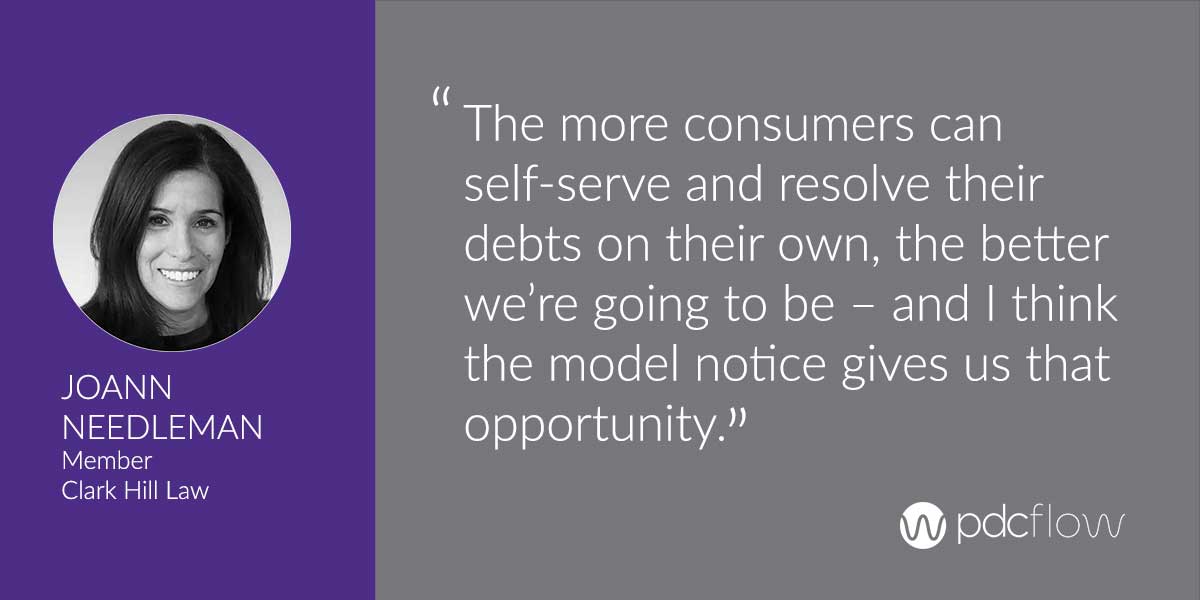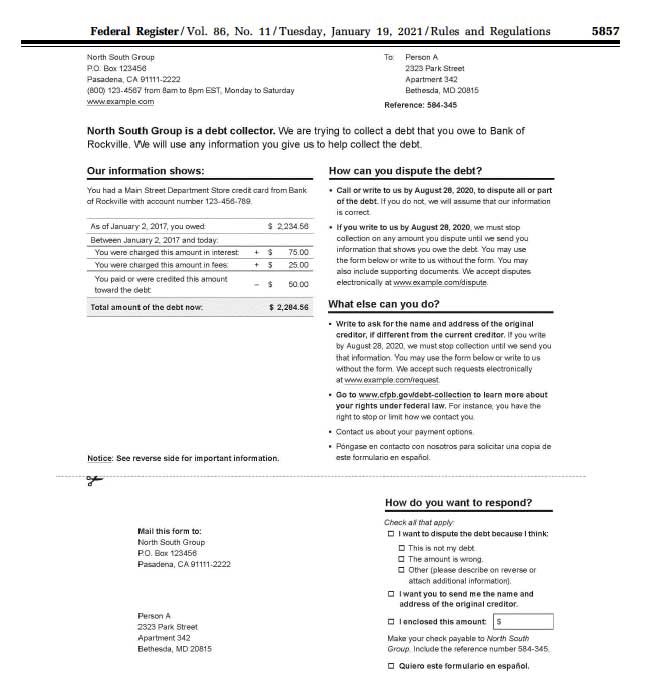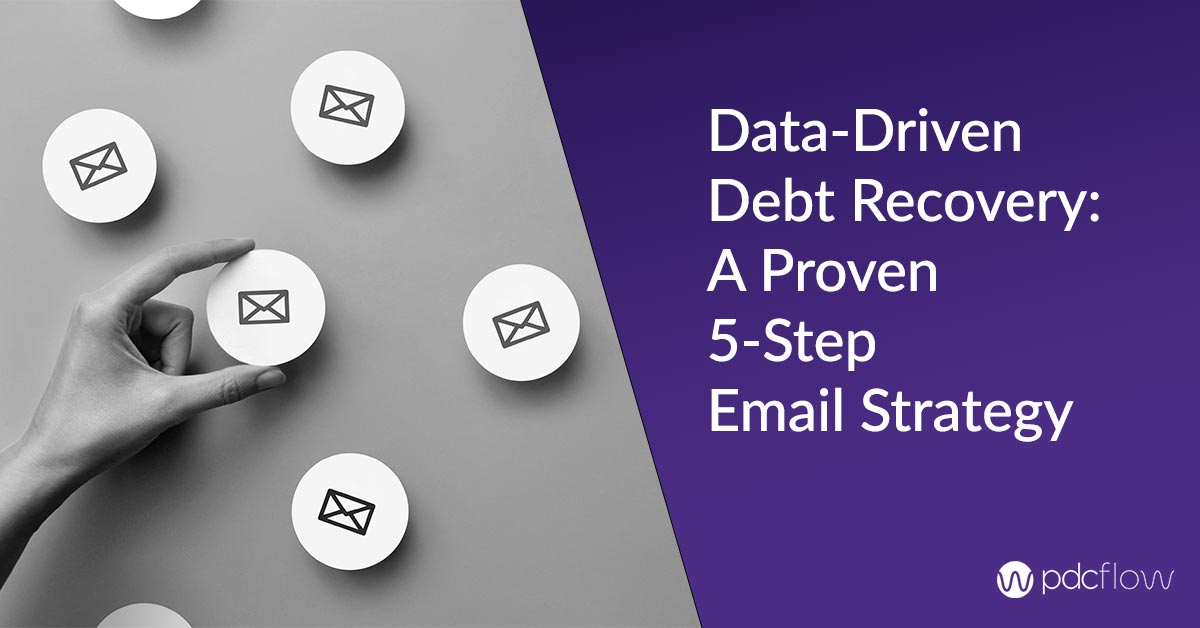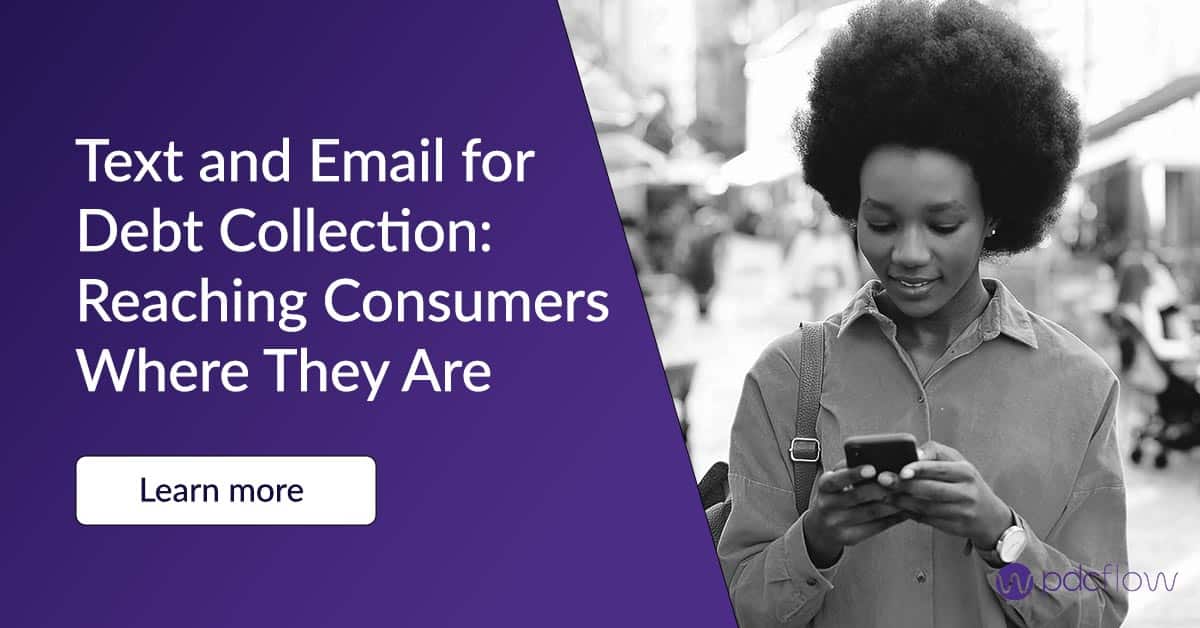Most modern debt collection agencies are starting to use email for collection, or have it on the roadmap to implement soon. Consumers like the convenience of email and companies prefer advantages like:
- The cost savings of using email compared to traditional mail
- The possibility to reach consumers you otherwise wouldn’t
- Faster collection on accounts
Even with the positive aspects of email for debt collection, one point of hesitation remains – sending validation notices.
Because Regulation F can be complicated, many agencies are still nervous to send this document by email. But there are ways to do so with minimal risk, as long as you keep some considerations in mind.
Considerations for Sending Validation Notices via Email
Regulation F states that agencies can use email for debt collection purposes. But there are still guidelines to follow – especially when sending a document as important as the validation notice.
It’s essential that debt collection agencies consult with their own legal counsel before any change that impacts compliance. What is right for one company may not make sense for another.
But there are some common considerations every agency should think about when they start to send validation notices through email.

Consent
It’s important to get permission from customers before you contact them through email. This consent can come from your agency or be passed to you from the original creditors. Here are a few things to keep in mind about email consent and validation notices:
- Full disclosure - You must give consumers full disclosures on the first contact. This fact still applies when you are using email to communicate.
- Passthrough consent - If your original creditor collects email addresses, they should let customers know they will remain opted in to debt communications via email if their bill becomes delinquent. This is how consent to email passes on to your agency.
- E-SIGN - Under the FDCPA, the validation notice is not required to be provided in writing if it is given in the initial communication. This means, if you haven’t contacted the consumer before this point, E-SIGN consent isn’t required to send a validation notice by email.
Model Validation Notice and Safe Harbor
Regulation F’s model validation notice is a way for collection agencies to take advantage of a safe harbor. What is a safe harbor, and how do you know your validation notice is close enough to the model validation notice to take advantage?
Safe Harbor
Regulation F has created a model validation notice that explains what items must be included for consumers. Agencies that include all of this necessary information (in a format as close to the model as possible) have a greater defense if challenged.
This safe harbor makes it easier to fight claims that your agency didn’t provide sufficient information to consumers.
For the most compliant email validation notices, accounts receivable companies need to follow the model provided not only in content, but in format also.
Remember, companies are not required to send a validation notice modeled after the one provided in Regulation F as long as it contains all the required information.
However, following that format is what allows agencies to take advantage of the safe harbor.
Substantially Similar
In order for safe harbor to apply, your company must make sure your validation notice is substantially similar to the one outlined in Regulation F. There isn’t an exact definition of what this means, and will be left up to courts to determine.
That’s why it’s best to follow the model as closely as possible to prevent this type of a challenge. Remember, your ultimate goal as a debt collection agency is to avoid lawsuits. Following the model validation notice as closely as possible is the best way to do so.
Email Format and Content
The format and content of a validation notice are essential to compliance. To follow the CFPB’s rules, some best practices to keep in mind are:
- Subject lines must contain one piece of identifiable information, like a truncated account number.
- Your emails must allow for electronic dispute or the ability to request original creditor information electronically.
- There are certain fields that need to be customized. Your email should have a way to populate account numbers, amount owed, and other personal information for the consumer.
- If you are using payment links or QR codes to an online payment page, keep these elements below on the tear off portion of the notice.
- Don’t provide the email in link format. The notice should be included in the body of the email and shouldn’t be hidden behind a password. Remember, this is information that must be delivered to the consumer. It’s essential that you make it easy to access and read.
Sample CFPB Model Validation Notice

One Agency’s Validation Email Results
Through PDCflow's integrated partner DAKCS software, one PDCflow customer recently began sending validation notices emails in bulk. Here’s the email campaign strategy they followed and the initial results they’ve seen from sending validation notice emails.
Step 1: Begin the campaign, establish baseline data
Debt collection email messages create an opportunity for companies to monitor delivery, open rates, and other statistics that are unavailable for traditional mail.
The first step of this particular campaign was to send an initial batch of validation notice emails as an official starting point.
This created a data set of email results the company could use to establish a performance baseline.
Step 2: Review first baseline results, establish success metrics
The choices you make within an email campaign will change depending on the type of message you’re sending and the goals you’re working toward.
When creating goals for an email campaign, ask yourself:
- What action do I want the consumer to take?
- What is a successful result?
- Are there any compliance concerns to take into account?
For instance, with a payment reminder campaign, you want consumers to take action by paying their bill. A successful campaign would be measured by the number of payments generated.
In the case of the validation notice campaign, success is much easier to measure. A validation notice email is successful just as long as it has been delivered to the intended recipient’s inbox.
Agencies need a way to monitor which email validation notices haven’t been delivered and make sure these consumers receive the notice in another form.
Step 3: Email performance results
After the PDCflow customer in question sent a few rounds of validation emails, they then had access to enough delivery rates and other key metrics to review the campaign, make improvements to subject lines and email content, and assess the results.
Now that the agency’s validation notice campaign is has been fine-tuned, the company has seen:
- Faster notice delivery - With email, companies no longer have to guess on mail delivery timelines. Digital channels make it easier to view delivery metrics and speed up the time from notice delivery to payment collection.
- Lower costs per notice - Accounting for letter vendors, postage, or other associated materials, sending validation notices through traditional mail costs quite a bit more than via email. Updating to digital channels saves money.
- Quicker turnaround on some resolved payments - Consumers are more likely to visit your website when your company is top-of-mind. Email captures consumer attention and can drive them to pay quickly. In this example, PDCflow’s customer received multiple payments from customers shortly after sending email validation notices.
Shifting Collection Strategies
Working in a high risk industry like debt collection can make using new processes and strategies seem overwhelming. Many agencies have been slow to update collection tactics out of fear of noncompliance and the hassle of learning new systems.
But the world has changed dramatically in just the last few years. Companies can’t continue to use slow, outdated methods and expect to see the same results they had in the past.
Email and text message communication is the new, modern standard for collection agencies. Consumers prefer these channels and Regulation F has stated they are acceptable, compliant options.
PDCflow’s Flow Technology helps debt collection agencies:
- Save money on required notices and other customer communications by eliminating the need for traditional mail.
- Increase collection rates by reaching consumers in the channels they prefer – email and text.
- Improve the customer experience by making payments faster and easier through digital channels and QR code payment links.
- Offer flexible payment options by creating recurring payment schedules either with the help of an agent or through self-service payments.
Learn more about using Flow Technology for validation notices, payment requests, scheduled payment reminders, and other important customer communications. Request a call from a PDCflow payment expert today.





